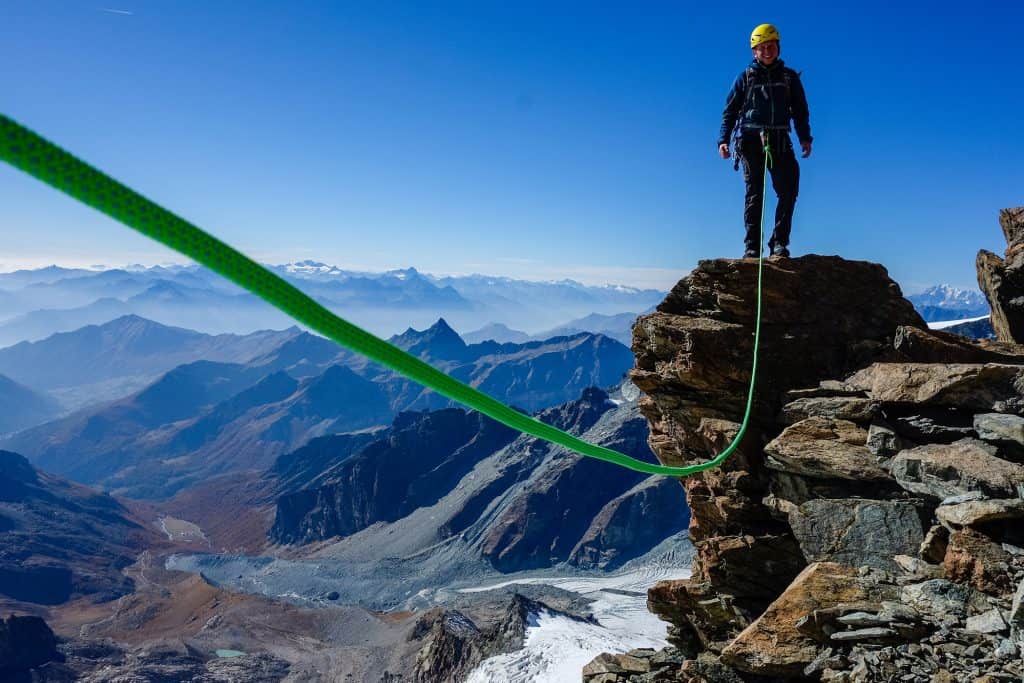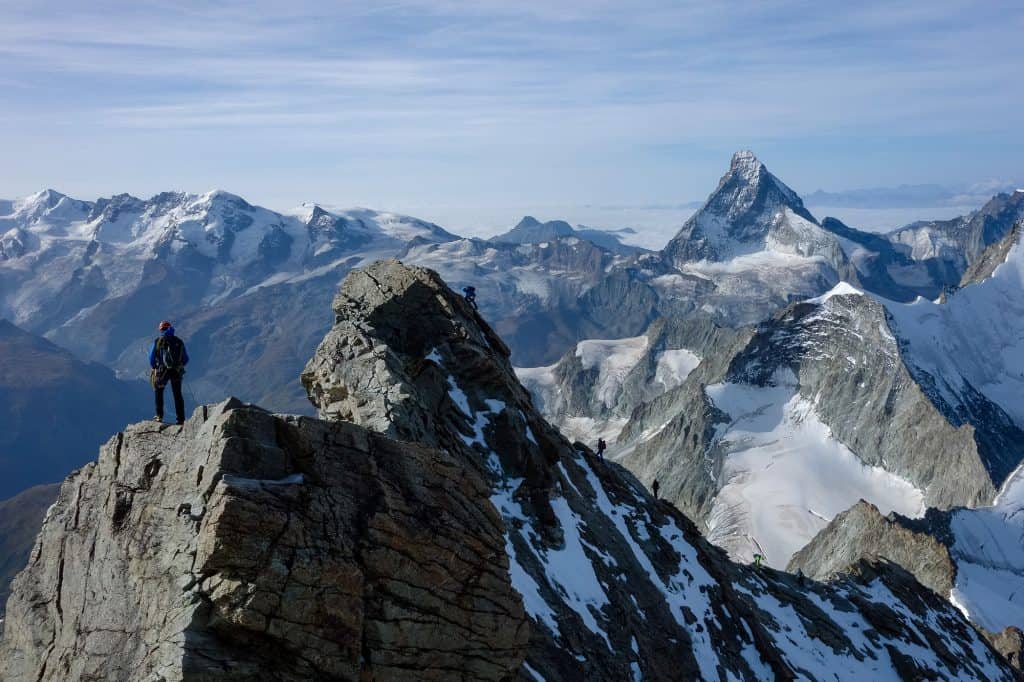Here at Summit, we’re skiers first and foremost. There’s a good chance you are too if you’re reading this. Our best days of the year are generally in winter. So what do we do in the summer months…well there is something special about mountaineering in Zermatt
I love skiing but I’ve never made the trip to the southern hemisphere to strap the planks on. I’m not even sure it’s worth the 3 hour round trip to ski ice / slush on the Zermatt glacier?
I think a big part of our enthusiasm for skiing comes from the mountain environment. Whether you’re breathing the clear air on a bluebird day or braving wind and snow as you head up the hill, being amongst the peaks is an uplifting experience that adds enjoyment beyond just the skiing itself.
So when you live in the Alps, the logical step is to move to sports that get you back up there. Hikingand trail running are great ways to spend time outside in the exact same areas that we ski in winter. Mountain biking can even give some of the downhill sensations we experience when we ski!

But there’s one activity that gets you higher. That gets you back into the snow and ice. That is truly an alpine experience. Mountaineering is a combination of hiking, climbing, glacier travel and peak bagging.
Each new peak can give you a sense of achievement beyond even those first red, black or off piste runs. There’s a lot to learn along the way (from climbing skills to crevasse rescue techniques) but Zermatt is an awesome place to make the journey. We are surrounded by 38 4000 metre peaks, each with their own routes varying from simple walking to technical climbing.
The Breithorn, at 4167m, is perhaps the easiest 4000m peak in the Alps. Although it’s a bit higher than others, it’s proximity to the lift accessed Klein Matterhorn gives you a starting point less than 300m below the summit. Some knowledge of glacier travel and basic crampon usage is required, but the ascent is a straight forward walk to a flat snowy peak. The views from the top surpass anything in the ski area and the fact you’ve put the effort in to get there make them even sweeter. The Breithorn is a fantastic start to your collection of mountains and is an awesome introduction to the world of mountaineering.
Another peak that benefits from the Klein Matterhorn ‘headstart’ and involves very little technical climbing is the Castor. The 4 kilometre walk out over the amazing glaciers makes this a much bigger day out and the steeper ascent to a much less crowded peak make this a way bigger prize.
There are several other peaks in the area that require serious fitness and a good level of acclimatization. For instance, the peaks opposite the Zermatt ski area (Obergablehorn, Wellenkuppe and Zinalrothorn) all require an ascent from the village. While most of the 2500 metre ascent / descent might be hiking, these all require greater levels of fitness and a night in a mountain hut on the way.
The even bigger mountains of the Dom and the Weisshorn need to be ascended from Randa (a few hundred metres lower than Zermatt) so are even greater tests of stamina!
More technical climbing skills are required for many of the peaks and this, combined with the long hikes to the ice and rock, puts these peaks towards the end of your mountaineering journey. A good example is the Dent Blanche. This is a 1700 metre ascent to the hut, and then a big day getting to over 4300m where the easiest of the routes to the top involves challenging climbing moves.

Of course, finally, there is the Matterhorn.
Although far from the most technically difficult climbing peak, the Matterhorn is no walk in the park. It’s a relatively easy hike from Schwarzsee to the Hornli hut for an overnight stay.
After an early start in the dark, the 1200 metre ascent loosely follows the Hornli ridge (up the middle of the mountain as you look up from Zermatt) before popping out on a narrow summit ridge. The climb from the hut normally takes 4 – 5 hours to the top and you should be back down in Zermatt for tea.
It goes without saying that the skills that need learning and the first ascents of increasingly challenging peaks are best done with a UIAGM mountain guide. While you’re with them, don’t be afraid to pick their brains about what they’re doing / why they’re doing it as you climb. It’s a great way to improve your skills and knowledge.
Remember that a guide’s role is primarily to keep you safe. Some don’t see passing on knowledge as part of their job at all. So, if you find a friendly guides who’s happy to help you in your mountaineering journey, try to employ their services as often as possible.
You might find that mountaineering becomes as big a part of your life as skiing!

